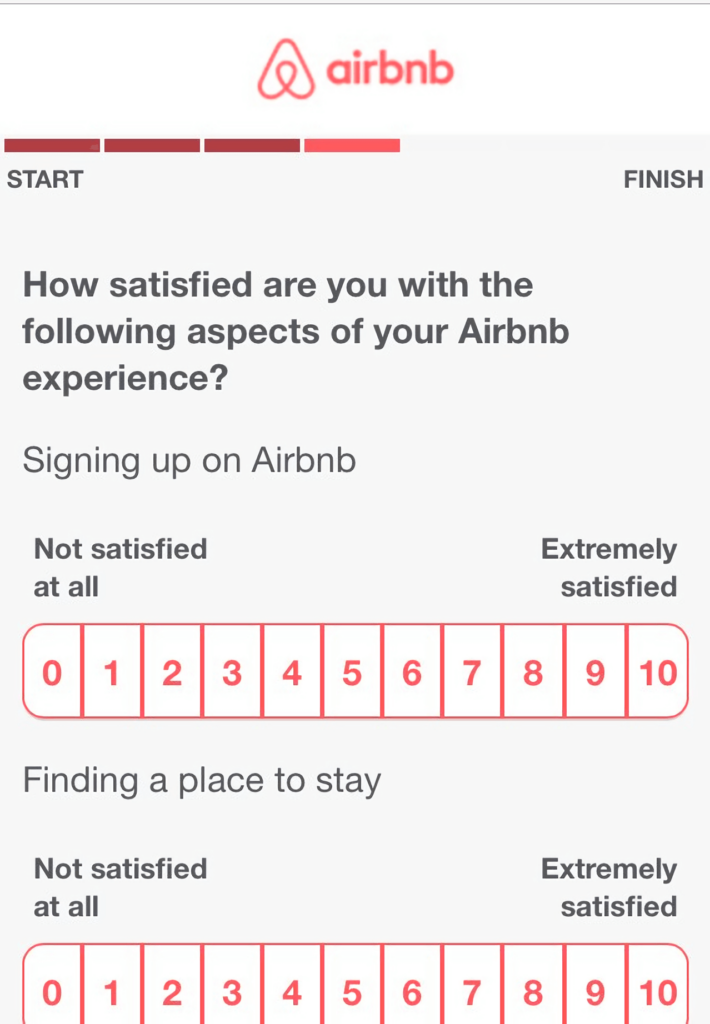Gathering customer feedback can be overwhelming, with comments coming from all directions. A VoC template helps by organizing raw insights into actionable plans, saving time and keeping the focus on customer needs.
These templates are customizable, whether you prioritize direct feedback, broader research, or empathy maps to understand customer emotions, ensuring nothing is overlooked.
What is Voice of Customer?
At its core, voice of the customer (VoC) is all about listening to your customers and your product users. It’s a process that captures what users think, feel, and experience when interacting with your product.
However, the goal of the voice of the customer (VoC) collection is to genuinely comprehend the reasons behind user behavior, not just to collect feedback.
With the help of user testing, surveys, interviews, and other research methods, teams can better understand what customers need and where improvements can be made.
In essence, it’s the voice of your customers guiding every decision, and the more effectively you can capture and analyze that voice, the stronger your product will be.
Benefits of using a voice of the customer template
Introducing a Voice of the Customer (VoC) template into your process is like putting a framework around an unorganized method. It helps you turn a mountain of scattered user feedback into clear, actionable insights.
Beyond organizing data, a well-designed VoC template offers several key benefits that can help transform your team’s understanding and reaction to customer needs.
1. Streamlined feedback collection
When you’re dealing with multiple sources of feedback—surveys, interviews, user testing sessions, or customer support logs—it’s easy to get overwhelmed.
A VoC template provides a standardized way to capture and organize this information. Instead of chasing down emails or piecing together fragmented notes, your team has a single place to store everything.
This structure saves time and ensures no valuable insight slips through the cracks. More importantly, it allows you to focus on the content of the feedback, rather than the headache of managing it.
2. Identifying key trends and pain points
With feedback neatly organized in a VoC template, identifying recurring issues becomes a lot easier. Instead of treating feedback as isolated comments, the template helps you spot trends.
For example, maybe several users mention the same confusing navigation or a specific feature they wish existed. These patterns reveal the real pain points that affect your users, allowing your team to prioritize the most impactful improvements.
You might miss these trends without a template, especially when feedback comes from various sources.
Having a structured format makes it much simpler to compile insights, compare user responses, and uncover hidden opportunities for improvement.
3. Aligning teams around user feedback
One of the most common challenges in product development is ensuring that everyone is on the same page regarding user feedback. Different teams (like product, design, and marketing) often have their own interpretations of what users want.
A VoC template helps eliminate this misalignment by serving as a shared resource that every department can access.
When feedback is organized and accessible, teams across the company can rally around the same insights.
Designers can create user-centered designs, marketers can tailor their messaging, and developers can focus on features that solve real user problems.
Instead of different departments working in silos, they’re united by a common understanding of what customers need.
4. Turning insights into action
Gathering feedback is just the first step—what really matters is how you act on it. A VoC template doesn’t just capture insights; it helps you turn them into concrete actions.
With categories that identify pain points, feature requests, and opportunities for improvement, the template makes it easy to map feedback to specific next steps.
For example, if your template reveals consistent complaints about onboarding confusion, you know where to focus your efforts. You can prioritize an overhaul of the onboarding process or introduce new tutorials to guide users through it.
The template ensures that feedback doesn’t just sit in a document somewhere—it gets funneled into tasks that drive real improvements.
When should you use a voice of the customer template

A Voice of the Customer (VoC) template is a huge game changer when providing curated content or product delivery that focuses on your customers. Here’s how and when to make the most of it:
During product development
Navigating product development without real user feedback can be like sailing blind. Using a VoC template guarantees that you are actively integrating feedback into your process in addition to simply collecting it.
As you iterate and refine, this template keeps user insights at the forefront, guiding each tweak and adjustment to better align with user expectations.
Before and after launching new features
Launching a new feature can feel like stepping into the unknown. Before the launch, using a VoC template allows you to gather anticipatory feedback and see potential user reactions.
Post-launch, the template captures real-world responses, helping you fine-tune the feature and address any hiccups swiftly. Taking the initiative to address possible unforeseen circumstances can help create chances for advancement.
To tackle recurring complaints
Repeated complaints can signal deeper issues. A VoC template is your go-to for organizing and analyzing this feedback. It helps you spot patterns and prioritize solutions effectively.
Addressing these recurring problems with a structured approach resolves user frustrations and shows that their voices are being heard and acted upon.
For strategic decision-making
Strategic moves should never be based on guesses. With a VoC template, you can ground your decisions in solid user data.
Whether planning new features, adjusting market strategies, or improving user experiences, the feedback organized through the template provides a clear, data-driven foundation for making informed choices.
When crafting empathy maps
Understanding your users’ emotions and experiences requires more than just data. Combining a VoC template with empathy maps offers a rich, multidimensional view of user needs.
The template helps organize feedback, while empathy maps delve into the emotional nuances. Together, they create a comprehensive picture that drives truly user-centered design.
Explore empathy maps and learn how to integrate them in your research process:
To harmonize cross-functional teams
It can be tricky to get teams to align around user feedback, but a VoC template makes it easier. It acts as a central resource, giving everyone—from product developers to marketers—a clear, shared view of what customers want.
During post-launch evaluation
After a product or feature hits the market, it’s time for a reality check. With the use of a VoC template, you can collect and evaluate post-launch feedback to get a comprehensive understanding of how your product is doing.
This critical evaluation phase helps pinpoint successes and areas for improvement, setting the stage for ongoing enhancements based on user experiences.
Key Voice of Customer template elements

An effective Voice of the Customer (VoC) template is a roadmap for better understanding and acting on user feedback. To get the most out of your template, ensure it includes these key elements:
Feedback collection channels
First, outline the sources where user feedback comes from—whether that’s through surveys, social media, or customer support interactions. You can guarantee a more comprehensive viewpoint by outlining the various channels.
The more touchpoints captured, the richer your insights will be.
User profiles
To better interpret feedback, it’s essential to know who’s giving it. Including demographics like age, region, or user type can help your team see the feedback in context.
For example, discovering if younger users struggle with specific features or if a certain region finds value in different aspects of your product.
Organized feedback categories
Structure feedback into manageable categories, such as product functionality, customer service, or feature requests, to uncover patterns and quickly address priorities. Diving into raw feedback without structure can lead to missed insights.
User pain points
Document the areas where users experience friction to help prioritize fixes that will impact user experience. No user experience is without its flaws. Documenting pain points enables you to identify friction areas that need urgent attention.
When frustrations are clearly laid out—slow page load times or difficult navigation—it becomes easier to prioritize fixes with the biggest impact.
Customer suggestions
Don’t just focus on problems—users often have creative solutions. Highlighting customer suggestions gives your team fresh ideas to explore, and sometimes, users can present you with innovative angles that haven’t been considered internally.
It’s a smart way to crowdsource improvement ideas directly from those who interact with your product daily.
Emotional tone and sentiment
Feedback isn’t just about what’s being said, but how it’s being said. Adding sentiment analysis—whether feedback is positive, neutral, or negative—helps you understand the emotional drivers behind user responses.
If a majority of feedback is emotionally charged, that signals deeper issues worth addressing promptly.
Actionable insights
Feedback has value when it translates into action. Use this section to highlight key takeaways and recommendations.
Each insight should lead directly to a next step for improvement, turning abstract user feedback into clear goals for your team to address.
Trend monitoring over time
Keeping track of feedback trends gives your team a long-term view of how user sentiment evolves. Rather than reacting to isolated incidents, tracking trends allows you to identify recurring themes, helping you address systemic issues before they escalate.
Clear action plan and accountability
Finally, accountability turns feedback into action. Assigning responsibility and setting timelines ensures that the issues raised aren’t left unresolved.
With ownership clearly defined, team members can follow through and users will see real improvements based on their feedback.
5 best Voice of Customer template examples
Looking at successful Voice of the Customer (VoC) templates can reveal a lot about how companies use user feedback effectively. We’ve picked out five examples highlighting how organizations collect and use customer insights.
1. Microsoft’s customer feedback hub
Microsoft’s customer feedback hub is a prime example of how an organization can drive efficiency. Their system categorizes feedback into distinct areas like “bug reports,” “feature requests,” and “praise.” This allows teams to identify and address issues quickly.
For product managers, the key takeaway is the benefit of having organized feedback categories, which streamline problem-solving and help prioritize critical tasks effectively.
2. Airbnb’s post-stay survey template

Airbnb’s survey template combines quantitative ratings with in-depth qualitative feedback. Following each stay, guests and hosts rate aspects such as cleanliness and communication and leave detailed comments.
This combination of numerical data and open-ended responses provides a comprehensive understanding of user experiences.
Product managers should consider how combining these data types can offer deeper insights into user satisfaction and highlight areas that require attention.
3. Amazon’s product feedback template
Amazon’s product feedback template is all about granularity. Users rate products based on criteria like quality, value, and delivery. This level of detail helps Amazon identify specific areas for improvement and guides product development decisions.
For product managers, the detailed feedback categories are crucial for making precise adjustments and continuous product refinement.
4. Slack’s feature request and bug reporting template
Slack’s feedback template emphasizes clarity and specificity. Users provide direct feedback on bugs and feature requests, which helps the team prioritize and address these needs efficiently.
The emphasis on developing a clear, targeted feedback form that ensures requests and issues are well understood and promptly resolved is simply perfect for product managers, and users alike.
5. SurveyMonkey VOC template

SurveyMonkey’s VoC templates are designed to be highly adaptable, allowing you to fine-tune them to meet specific needs. Whether you’re looking to assess customer satisfaction, gather feedback on a new product, or explore user experiences, these templates can be customized to fit your requirements.
What sets these templates apart is their versatility. You can modify questions, add various types, and target different user groups.
For example, you might use a detailed survey to investigate specific aspects of your product or a simple satisfaction survey to get quick feedback. The ready-made template makes all of these easier.
How to create a Voice of Customer template for your team
Creating a VoC template that works for your team means considering the unique needs of your project and aligning your goals with user feedback. There’s no better way to get started than having these checklists ticked off your box.
1. Define your goals
Begin by clarifying what your team wants to achieve with the VoC template. Are you aiming to enhance product features, solve user pain points, or improve overall customer satisfaction? You can mould the template’s structure to meet these particular goals by outlining them in the beginning.
Setting clear objectives also ensures that the team stays on task and that the input you get is pertinent to the things you value most.
2. Identify key users of the template
Understanding who will use the template is crucial. For most teams, this includes designers, product managers, researchers, and marketing specialists. The template should be easy for these key users to navigate and interpret.
Consider their needs and make sure the layout is intuitive, ensuring that the template provides valuable insights without overwhelming them with too much data.
3. Select user feedback channels
Once you know who will be using the template, it’s time to think about where your feedback will come from. Consider using multiple channels—surveys, usability tests, customer support logs, social media, and even direct interviews.
Collecting feedback from diverse sources ensures you capture a wide range of user experiences, helping the team understand different perspectives and issues.
4. Choose the right VoC methodology
Decide on the best VoC methodology to gather and analyze the feedback. This could involve qualitative methods like user interviews or focus groups, as well as quantitative methods like surveys or analytics data.
The methodology you choose should align with your goals, ensuring that the insights gathered are actionable and relevant to improving your product or service.
5. Design the template with key elements
When designing your template, ensure it includes important elements like user profiles, feedback categories, emotional tone, and sentiment analysis.
User profiles help contextualize feedback by showing who is providing it, while feedback categories allow your team to sort insights into actionable areas, like product improvements or customer support issues.
Including sentiment analysis helps gauge the emotional tone behind user comments, giving a deeper understanding of their experiences.
6. Pilot test the template
Before rolling it out to the entire team, test the VoC template with a smaller group to identify any potential issues.
This pilot phase will help you assess if the template is practical and effective, and allow you to make adjustments based on real-world use.
It’s better to identify gaps during this testing phase than to encounter problems after full implementation.
7. Train your team
Once the template is finalized, ensure your team is trained on how to use it effectively.
A template is only as useful as the people using it, so taking the time to walk through its structure, explain how to collect feedback, and demonstrate how to analyze the data will ensure everyone is on the same page.
This step is key to making sure the feedback collection process runs smoothly and consistently.
8. Refine the template over time
Your VoC template should evolve based on feedback from both your team and the users. Regularly review how the template is performing—are you gathering the right data? Is the format still useful?
Making adjustments based on what works and what doesn’t will help your VoC efforts stay relevant and effective over time.
Some professionals also highlight the importance of empathy maps, an effective tool that helps designers, marketers, and other team members empathize with customers’ emotions and pain points.
These maps guarantee that your strategy will fit your customers throughout their pain points. The best part is that there’s room to test, refine, and improve on sections that fail to work.
Best practices for implementing a Voice of Customer template

Implementing a Voice of the Customer (VoC) template can bring immense value to your team, but its success lies in how well executed it is.
Simply having a template isn’t enough—you need the right strategies to make sure it’s effectively collecting, analyzing, and applying user feedback.
Here are some best practices to ensure your VoC template truly benefits your UX efforts.
Keep feedback questions focused on actionable insights
Your template should focus on gathering information that can directly impact product decisions. Avoid asking vague questions. Instead, frame questions that lead to clear, actionable outcomes.
For example, rather than asking users, “Do you like this feature?” it’s better to ask, “What specific aspect of this feature is most useful to you?” Focused feedback makes it easier for the team to understand what needs to be improved.
Combine direct feedback with research data
When filling out the VoC template, it’s essential to include both user-generated feedback and research-based insights. Direct feedback from surveys or interviews tells you what users say, while usability testing and behavioral data show you how they act.
According to tips shared by project managers, blending these two types of insights can provide a more comprehensive understanding of user needs.
Ensure templates are accessible across teams
One of the main strengths of a VoC template is its ability to centralize user feedback, but it won’t be helpful if it’s siloed within one department.
Make sure the template is accessible across all relevant teams—designers, marketers, and product managers—so they can leverage the insights.
Teams working together in real-time to review and implement feedback ensures alignment and helps avoid miscommunication.
Incorporate empathy mapping
Empathy mapping can be especially useful for design and marketing teams that need to fully understand users’ emotional journeys. Including this approach helps your team empathize with the user’s perspective and builds a more user-centered product development process.
Regularly update the template based on feedback
Your VoC template should evolve as your product grows and as new types of feedback emerge. Teams should review the effectiveness of the template periodically to ensure it’s capturing the right insights.
This means tweaking the structure, questions, or categories as needed to maintain relevance over time. Keeping the template flexible ensures it continues to be an effective tool for user feedback.
Limitations of a voice of the customer template

While VoC templates are valuable for collecting user feedback, there are a few limitations that teams should be aware of. If not addressed properly, these limitations can reduce the effectiveness of your feedback efforts.
Let’s explore some common pitfalls and how to avoid them.
Feedback overload
VoC templates can sometimes lead to an overwhelming amount of feedback, especially when gathering data from multiple channels.
If the volume of feedback becomes too high, it can be difficult for teams to identify what’s most important, potentially causing them to miss critical insights.
📉 How to avoid it:
Implement a clear categorization system within the template. Break down feedback into specific areas such as usability, features, or customer service. This helps your team prioritize what to focus on without being buried under an avalanche of data.
Misinterpreting user feedback
A common issue with VoC templates is the potential to misinterpret feedback, especially when it’s vague or open to multiple interpretations.
Misreading user intent can lead to misguided product changes, resulting in wasted resources and user frustration.
⚠️ How to avoid it:
Whenever possible, follow up on unclear feedback with more in-depth questions. Pairing user feedback with behavioral data or usability testing can also give your team a clearer picture of user intentions and experiences.
Lack of team engagement
Even if you have a well-designed VoC template, it won’t be useful if your team doesn’t engage with it. Lack of training or unclear processes can lead to the template being underused, leaving valuable user insights untapped.
❗️How to avoid it
Make sure that all relevant teams understand the template’s importance and how to use it.
Training sessions and regular reviews of how the template is performing in practice can boost engagement and ensure that the template becomes a core tool for decision-making.
Relying too heavily on templates

There’s always the risk of becoming overly reliant on templates, to the point where they limit flexibility in gathering new or innovative feedback.
Sticking too rigidly to predefined categories or questions can stifle creativity and reduce the depth of the insights you gather.
💣 How to avoid it
Encourage your team to view the template as a guideline rather than a rule. Allow flexibility for adding new categories or adjusting questions as needed. Balancing structure and adaptability is essential to keep your feedback system dynamic.
While VoC templates are incredibly useful, they do come with challenges that can reduce their effectiveness if left unchecked.
We cannot understate the necessity of being aware of these limitations and ensuring your strategy is built to overcome them.
In summary
Every brand approaches its customers differently, but one thing remains constant: speak to them in their language.
You can not go wrong with an intentionally curated VoC strategy that focuses on your customers from beginning to end, and this guide will help you get started.
Ready to put all these to work but don’t know where to get started?
UXtweak research tools can help you turn Voice of Customer insights into actionable strategies. Sign up for free! ⬇️






